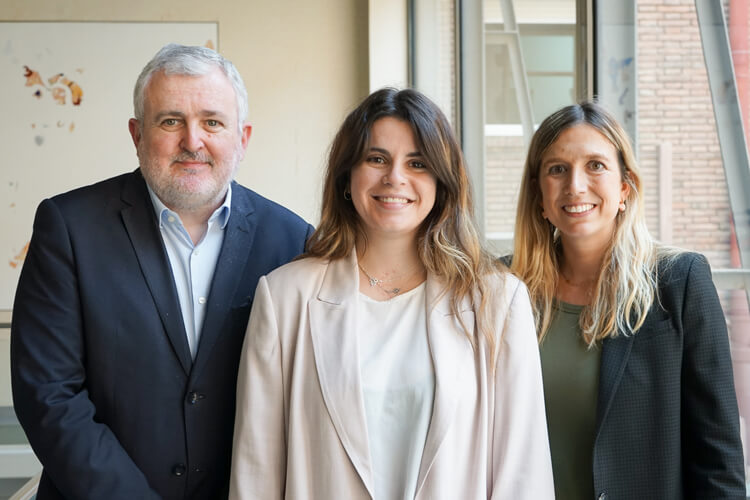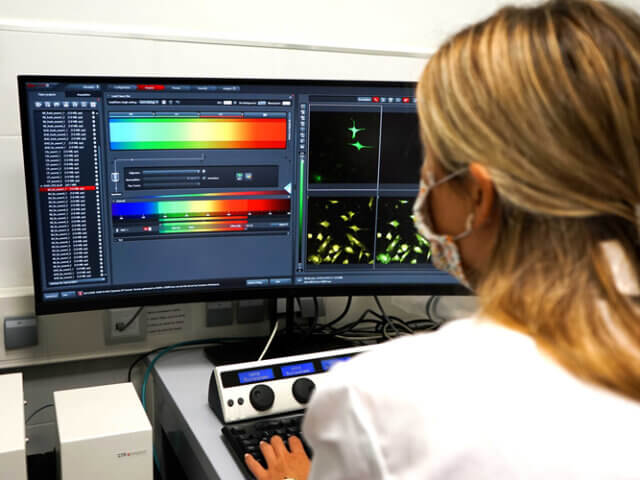Polymers for Invisible Nanoparticles in mRNA Vaccines

Nanotechnology has undergone a significant evolution and has become one of the keys to the future medical revolution as it enables us to create new therapies and brings us closer to personalized medicine. The most recent example is the mRNA vaccines against COVID-19, which exponentially increased interest in the development of nano vectors to deliver genetic material.
Despite their undeniable potential, there are still barriers to overcome for implementing these technologies. Current vectors are eliminated prematurely within our body due to misdetection by the immune system. In addition, they do not present specificity at the time of transfecting the Antigen Presenting Cells (APCs), the cells of interest, resulting in a systemic biodistribution. These limitations have held back the potential for mRNA vaccination development in general. For this reason, the design of new platforms that target immune cells and generate a controlled and effective response is crucial for the acceptance of mRNA technology.
Within this context, Dr Coral García recently conducted her doctoral thesis at the Materials Engineering Group (GEMAT) in the IQS School of Engineering, entitled “Stealth graft polymers for nanoparticle based mRNA vaccines,” which was jointly supervised by Dr Cristina Fornaguera and Dr Salvador Borrós. The thesis had two fundamental objectives: on the one hand, the design, synthesis, and validation of a new family of mRNA delivery vectors of a polymeric nature. The second objective focused on the comprehensive characterization of the interaction of nanoparticles in the physiological environment (biological identity) and on the development of a proof of concept of vaccination against a melanoma model in mice.
Design and formulation of new vectors
One of the barriers that must be overcome when applying these technologies is the opsonization of nanoparticles, that is, coating them with proteins and other molecules from the organism, which make them recognizable by the immune system to thus be consequently eliminated from the system.
To find a way to avoid this elimination and ensure the release of the mRNA at the point of interest, Dr Coral García explored different design strategies for this platform, specifically the combination of zwitterionic polysulfobetaines (pSBMA) with cationic poly(beta-aminoesters) (pBAE), to formulate discrete polyplexes. The synergy between the positive charge of pBAES and the non-stick properties of pSBMA results in a formulation that efficiently facilitates the encapsulation of mRNA while also avoiding opsonization.
Going one step further, a third element was added with the incorporation of a peptide that is capable of interacting with a receptor expressed on APCs. The integration of this peptide resulted in the increased transfection of cells that the complementary receptor expresses. This made it possible for the resulting nanoparticles to preferentially target the APCs. In addition, and in a synergistic manner, the zwitterionic component ensures that the peptide remains accessible, thus avoiding the masking caused by the absorbed proteins.
Proof of concept in OVA melanoma
In collaboration with Dr Santiago González’s group at the Institute for Research in Biomedicine at the USI in Bellinzona, the possibility of applying the NPs developed in this thesis for both prophylactic and therapeutic strategies for cancer treatments was evaluated, specifically for melanoma.
Based on a study of their bio-distribution through the analysis of accumulation in organs to the cellular scale, the pharmacodynamics of the particles and their selectivity for APCs were determined. The evidence obtained reflects the efficiency of the particles developed in terms of transfection, leading to the characterization of the tumour and cellular responses generated after their administration in animal models. Finally, the validation of the designed system was confirmed through an immunization and anti-tumour efficacy experiment, in which the efficiency in the prevention and reduction of the tumour was tested, administering the nanoparticles prophylactically and therapeutically, as well as preventing the development of metastases.
The results obtained in this research have made it possible to reach a conclusion on the need for a careful analysis of the interaction between the synthetic and biological identity of nanomedicines for their future implementation.
This research has formed part of the zwiRNA project. It has received funding under the IQS grant programme for the recruitment of pre-doctoral research staff.
Related publications
Cristina Fornaguera, Marta Diaz-Caballero, Coral Garcia-Fernández, Salvador Borrós, et al., Synthesis and characterization of mRNA-loaded poly(beta aminoesters)nanoparticles for vaccination purposes,
Best Poster Award (Future leader) – 22nd PuzzleX event
Best Oral Lecture Award – European Society of Biomaterials Bordeaux, 2023. https://www.esbbordeaux2022.org/
Patent: Zwitterionic functionalized poly(beta-aminoester)polymers and uses thereof. Coral García Fernández, Cristina Fornaguera Puigvert, Salvador Borrós Gómez. Application PCT/EP2022/078472
RELATED PEOPLE:
RESEARCH GROUP
Materials Engineering
Chemical & Synthetic Biology for Biotherapies
RELATED PROJECTS
ZwiRNA (Nanopartículas zwiteriónicas como vacunas de ARNm contra el cáncer pulmonar)





